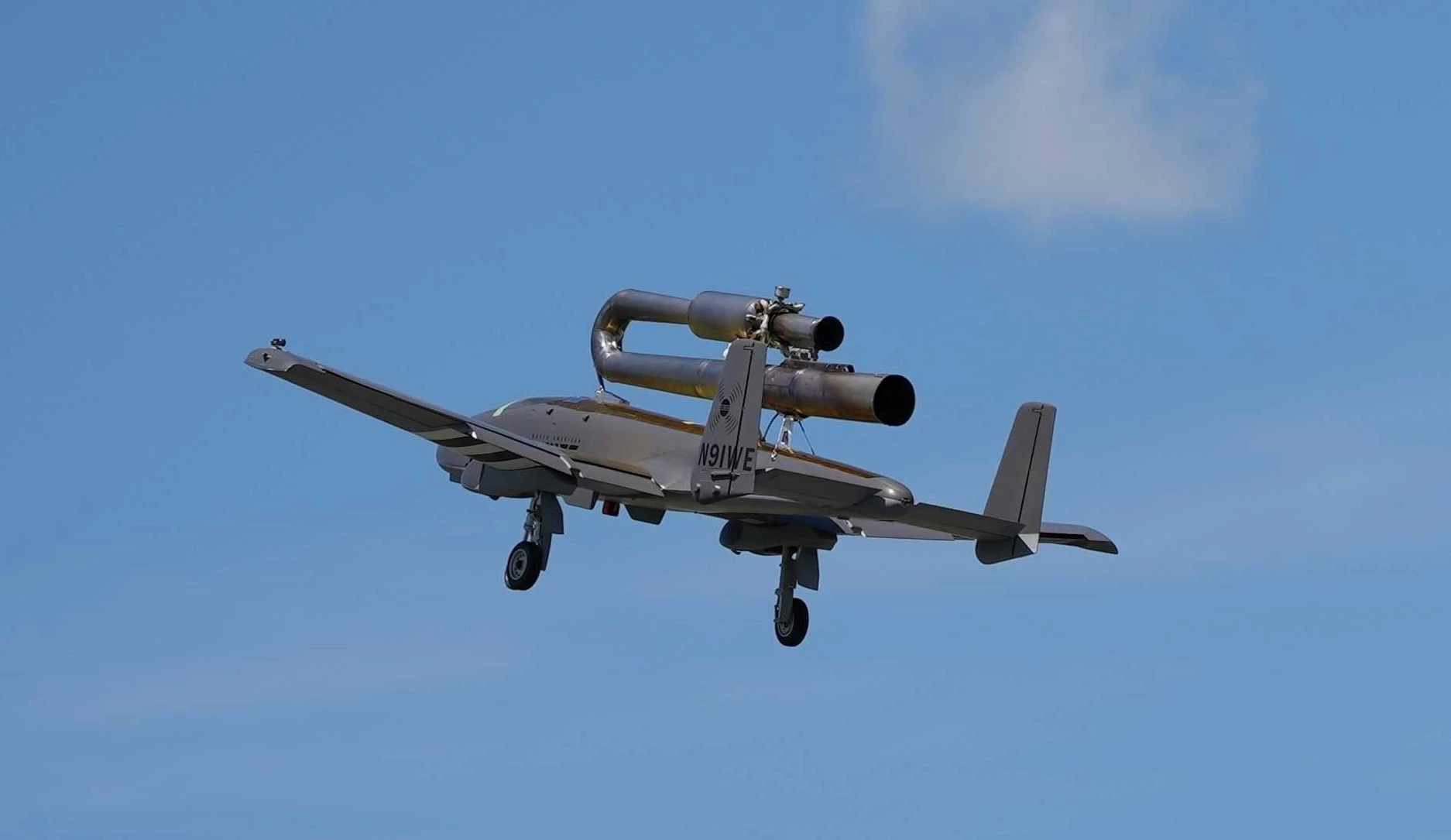In an effort to create a simpler, more affordable form of jet propulsion, University of Maryland spinoff Wave Engine Corporation has developed a digitally controlled modern-day pulsejet engine for unmanned aerial vehicles (UAVs), a design that uses no moving parts. After officially launching its first engine back in March, the company announced this week that it's delivered the first customer engines. This loud, pulse-combustion fire-breather is officially on its way to more air-bound vessels.
To get more specific (but not much), Wave announced on Tuesday the delivery of the first J-1 engines to an "aerospace prime contractor on contract with the US government" – Bond-style hush-hush stuff. The company also says it has other customers working to integrate the J-1s into their UAV designs.
The J-1, a trombone-looking contraption that seems to be most at home atop the aircraft fuselage, is designed for high-speed UAVs with up to 200-lb (90-kg) gross vehicle weights. It weighs 18 lb (8.2 kg) and measures 5.5 x 12.5 x 64 inches (14 x 32 x 163 cm). It can run on a number of fuels, including gasoline, E85 bioethanol or kerosene-based jet fuel, putting out up to 55 lbf (245 N) of thrust.
In contrast to the rotational components used in other jet engines, Wave's pulsejet eliminates the need for moving parts. Instead, it relies exclusively on combustion-driven pressure waves to push out hot gases and create thrust.
The combustion takes place intermittently when fuel and air ignite in the chamber, increasing temperature and pressure to push hot gasses out of both ends of the tube and create thrust. The process results in a partial vacuum that causes the tube to suck fresh air in, starting the process over again for the next round of combustion and thrust.

Pulsejet engine technology has existed since the beginning of the 20th century, but Wave has updated it with modern technologies like electronic control and believes it ripe for the growing UAV industry. It declares it capable of high-speed propulsion at a lower cost and more rapid scalability than traditional jets.
Beyond the J-1, Wave is working on a larger K-1 engine that promises up to 220 lbf (979 N) of thrust for powering aircraft weighing up to 1,000 lb (454 kg). It also believes its technology has potential for larger commercial applications and a new class of high-speed VTOL. The engine family has been tested at air speeds of 200 mph (322 km/h).
"We are looking forward to working with our customers to increase production and bring an unmatched combination of cost, simplicity and flight performance to market," said Wave CEO Daanish Maqbool, looking ahead.
In the video below, you can watch the latest J-1-powered flight using Wave's Scitor-D UAV. This footage includes a sweet fireball-spewing start that we didn't see in the last video.
Source: Wave Engine Corporation





